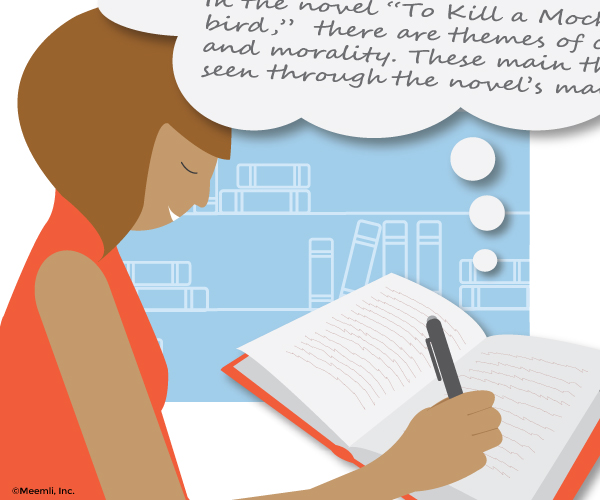How To Improve Your Writing Skills – Add Engaging Details!
(This is #1 in our series of tips for writing better essays.)
As a high school English teacher, I have read thousands of essays, from autobiographies to persuasive essays to Advanced Placement literary analysis essays. One problem that I often notice is that students tend to write in general terms and don’t provide enough information to make their work personal and impactful. Even essays that are already fairly good, could be made compelling with more detail to flesh out what the writer is trying to convey. So, if you are looking for a concrete way to improve your writing skills, these two techniques will instantly take your essay to the next level and are simple enough to try out with your next assignment.

Be Specific
Specific means “clearly defined or identified.” In other words, tell what kind and how many. “Baby, it’s cold outside” may be good for a song, but a California girl like me can feel chilly at 60 degrees, while someone in Minnesota might wear shorts when it’s 40 degrees. Save everyone the trouble and be specific. Often our default is to write in general terms, but incorporating specific details makes your writing more accurate and interesting.
Check out this example:
Kobe Bryant recently retired after a long and successful career.
If you’re already familiar with Kobe Bryant, this sentence may not be problematic. But, if you didn’t know anything about him, you probably need more information.
Kobe Bryant, star basketball player for the Los Angeles Lakers, recently retired after a 20-year career that included leading his team to five NBA championships.
Now we’re talking. Still just one sentence, but there is no mistake as to who Kobe Bryant is, what type of athlete he is, and what makes his career “successful.”
Don’t assume your readers will know what you are thinking; you have to tell them exactly what you want them to know.
Be Descriptive
“Show not tell.” Ever heard your teacher say this? She’s reminding you to be descriptive in your writing: paint a picture with your words by showing what you are thinking, not simply telling. You can do this by using figurative language, lively verbs, and sensory details (the five senses).
Let’s consider the most popular books right now. What these books have in common is that the reader is able to escape into a unique world. The author uses such vivid details that the reader can visualize the scene and characters.
In this example from The Hunger Games, you’ll see the difference that details make:
Details Removed:
Sitting next to Prim is an ugly cat. Prim named him Buttercup because of his coloring. He is not friendly to me. I think he still remembers how I was mean to him when Prim brought him home.
Original Passage:
Sitting at Prim’s knees, guarding her, is the world’s ugliest cat. Mashed-in nose, half of one ear missing, eyes the color of rotting squash. Prim named him Buttercup, insisting that his muddy yellow coat matched the bright flower. He hates me. Or at least distrusts me. Even though it was years ago, I think he still remembers how I tried to drown him in a bucket when Prim brought him home. Scrawny kitten, belly swollen with worms, crawling with fleas.
While there is nothing seriously wrong with the first passage, it isn’t very interesting either. In the original passage, however, the author breathes life into the cat. The way he is sitting conveys intent, with the use of the lively verb “guarding”. We can visualize him because we know his exact shade of yellow, and we may even feel sympathetic towards him because of the description “scrawny…crawling with fleas.”
Using descriptive details is a natural pairing for creative writing, but it works well with other genres, too. For instance, informative essays can be more effective with descriptive details. The phrase “the resulting solution will change color” is less impactful than “the resulting solution will turn from clear to blood-red”.
Make it work for you
It’s easy to try out these techniques. Look at any essay you’ve already written and see if you can liven it up with specific or descriptive details.
But to be really good at using these techniques, you need to know more about them and how to use them effectively (too many descriptions can drag your essay down!). Check out online resources to learn more about descriptive writing (here’s one).
The best way to improve your writing is to write, a lot. And get feedback from someone qualified, because there’s more to descriptive writing than just throwing in some adjectives. So don’t be shy, practice and show what you’ve written to someone you trust to get a meaningful response. (Check out our Descriptive Writing course to learn more about how to add engaging detail and get personalized teacher guidance.)
Soon, these techniques will be infused into your natural writing style and you won’t have to work so hard on them. Happy writing!
We’d love to hear from you! Tell us how you plan to add more detail to your essays.
Writing a College Essay?
Now from Meemli – College Essay help from experienced experts!
Find the option that’s just right for you!
Get More Info
Related Posts:
